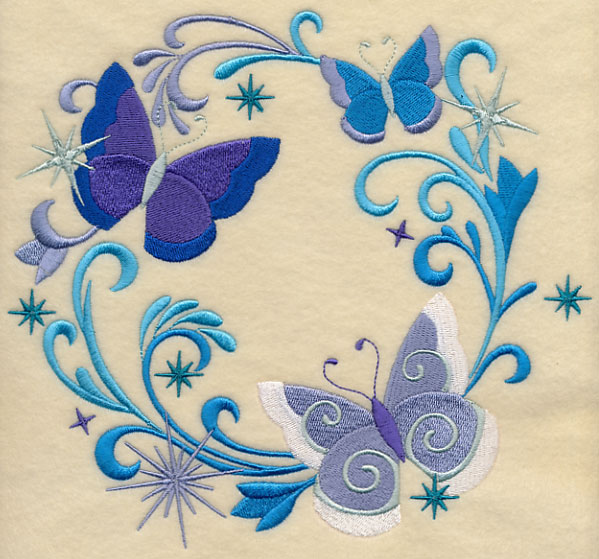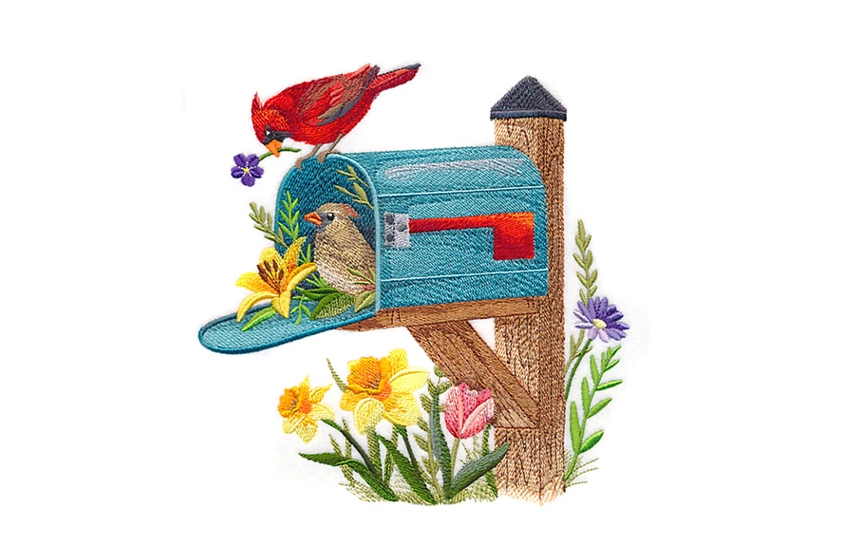Fleece is warm and cozy, and is a great fabric to use for sewing and embroidery projects because it comes in a variety of colors, weights, and thicknesses. Follow these tips and tricks to learn the best way to embroider on fleece for excellent results!
Project Needs & Notes:
- Fleece fabric, blanket, vest, or other item
- Medium-weight (2.5 ounce) cutaway stabilizer
- Water-soluble stabilizer
(lightweight to use as a topping,
heavy-weight to use as a backing)
Designs Used

Fleece is composed primarily of polyester, and it's soft and fuzzy. You'll find it in blankets, vests, pullovers, mittens, and scarves.
To test the quality of the fleece, stretch it. A good-quality fleece will snap back quickly. Lower-quality fleece will contract more slowly.
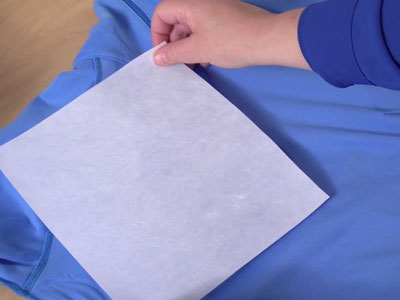
Fleece is stretchy, so cutaway stabilizer is the best choice. It will keep the fleece from shifting and stretchy while the hoop is moving around.
Use a medium-weight stabilizer (2.5 - 3 ounces).
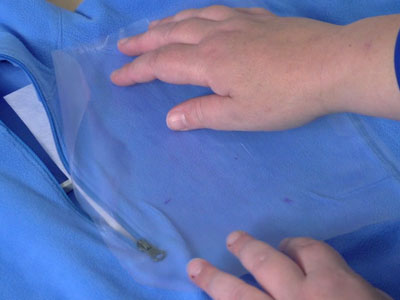
Place a piece of water-soluble stabilizer on top. This prevents the stitches from sinking down into the nap of the fleece.

Hoop all three layers together -- stabilizer, fleece, and topping. Hooping all three layers together guards against shifting and gaps in the stitchout.
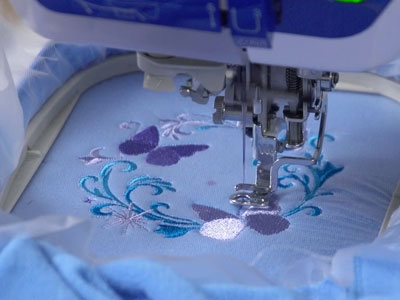
A size 11 or 75/11 embroidery needle is an excellent choice for fleece.

After embroidering, unhoop the fleece.
You may see a ring left by the hoop. This is normal, and occurs when the hoop presses down on the fabric. The ring will come out when the item is washed, or you can steam it, too.
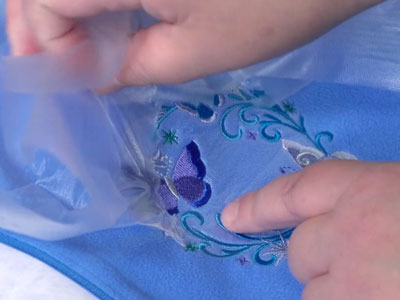
Tear the water-soluble stabilizer away from the top.

Cut the stabilizer away from the back. Leave about 1/2" around the design.
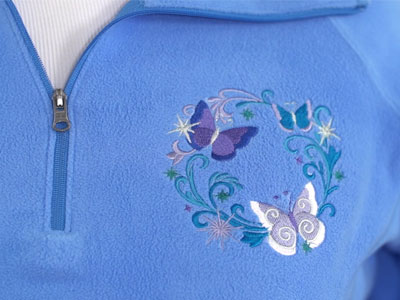
This example shows the Fa La La Flutterby Wreath on the front of the pullover.
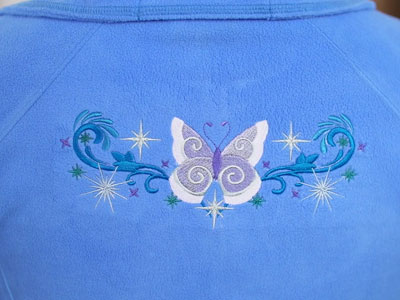
The coordinating Fa La La Flutterby Border is a beautiful addition to the back, too.

If you have a very light design, you can use water-soluble stabilizer on the front and back, and then the embroidery will be reversible.
Toile designs are an excellent choice for this technique. In this example, I'll stitch a storm of snowflakes onto a fleece travel blanket.
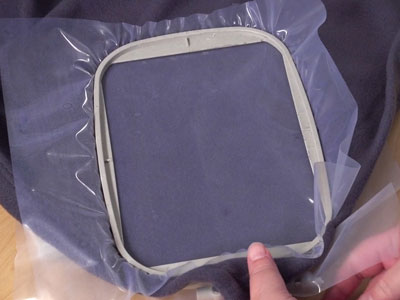
Hoop the fleece between two pieces of heavy-weight water-soluble stabilizer, such as Sulky Ultra Solvy.
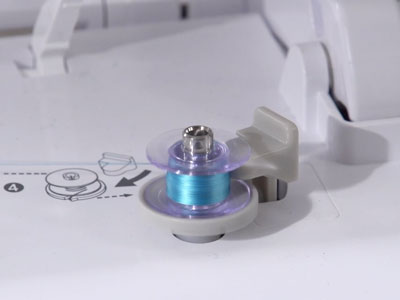
Wind a bobbin with the same thread used in the top.
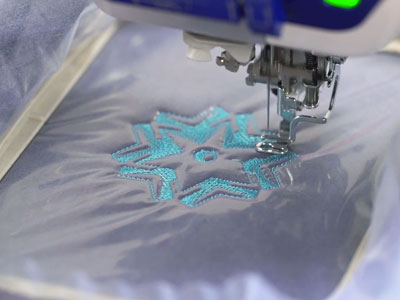
Embroider the design. The toile snowflake is light, so the heavy-weight water-soluble stabilizer is fine support for the fleece.
Avoid Redwork or linework designs, because those types of designs will sink into the fleece.
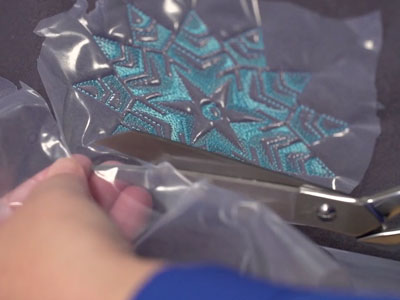
After embroidering, cut the excess water-soluble stabilizer away from the front and the back.
Soak in water, or launder, to remove the rest.

The trio of snowflakes on this blanket creates a wintry, fashionable look. They're all from the A Toile Snowflakes Design Pack.
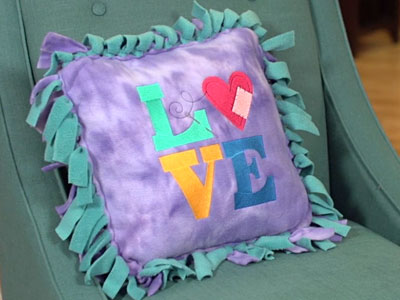
Fleece comes in a wide variety of colors, and it's wonderful to use in a wide variety of garments and home decor projects, too.
This is the Squeeze Me Fleece pillow. Project instructions show the steps for making this cozy cushion.
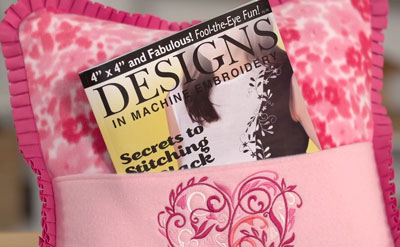
This fleece pillow has a pocket for tucking magazines, e-readers, and more. Project instructions are here.

Fleece hats keep heads and ears warm while playing in a winter wonderland. The on-the-edge designs are adorable additions.
Find the tutorial right here.

We repeated a design over and over again on this fleece poncho. The design has only four color changes, so it was quick to stitch.
See the steps for making this poncho in the tutorial here.

It's fun to stitch coordinating designs on the fronts and backs of pullovers and vests.
This vest features a dancing dachshund on the front.
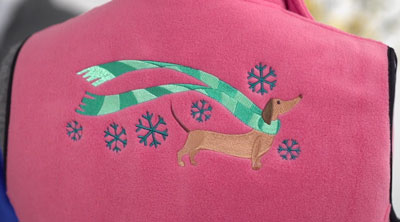
The Wrapped Up in Winter Dachshund was the perfect design to add to the back.
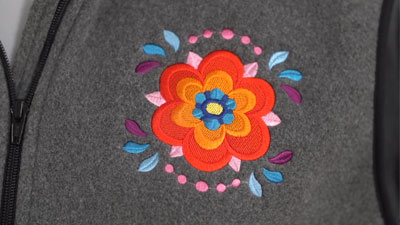
Jewel tones are an excellent contrast to the charcoal grey fleece. The design is Koros Flower 1.
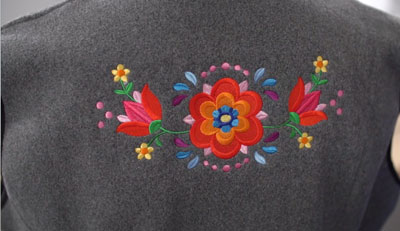
The Koros Flower Spray design adds a bold and bright look to the back of the vest.
